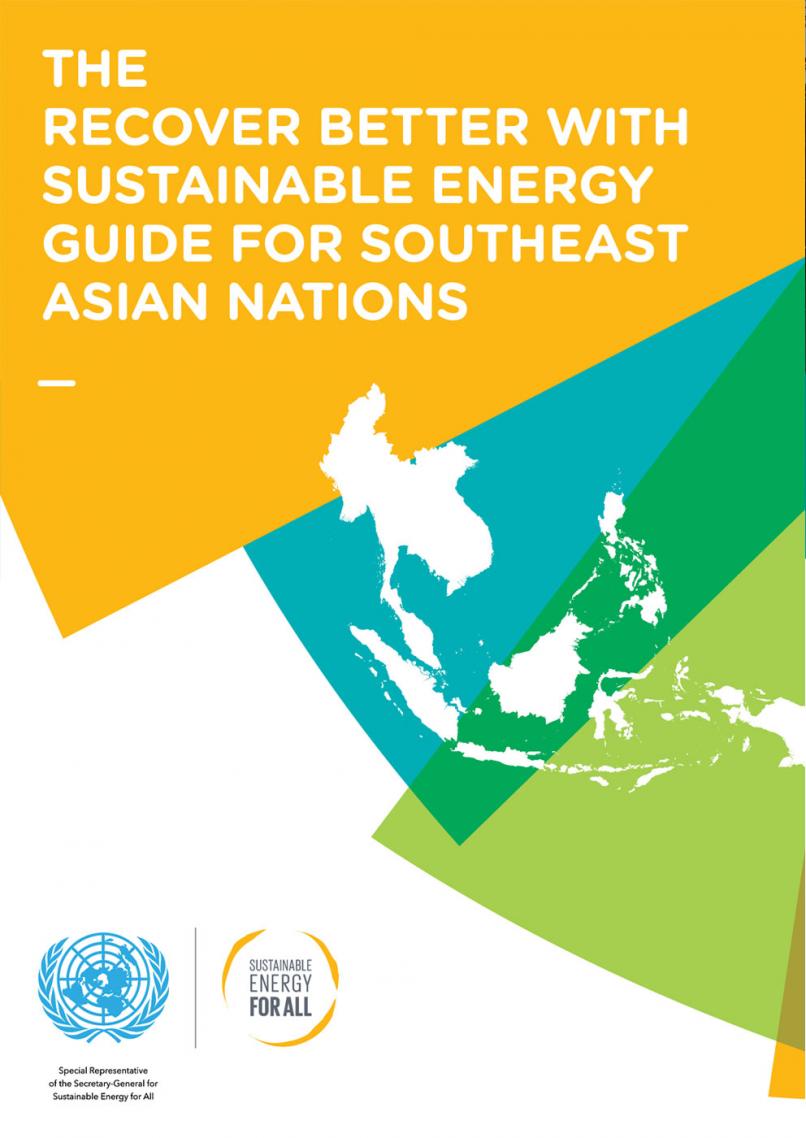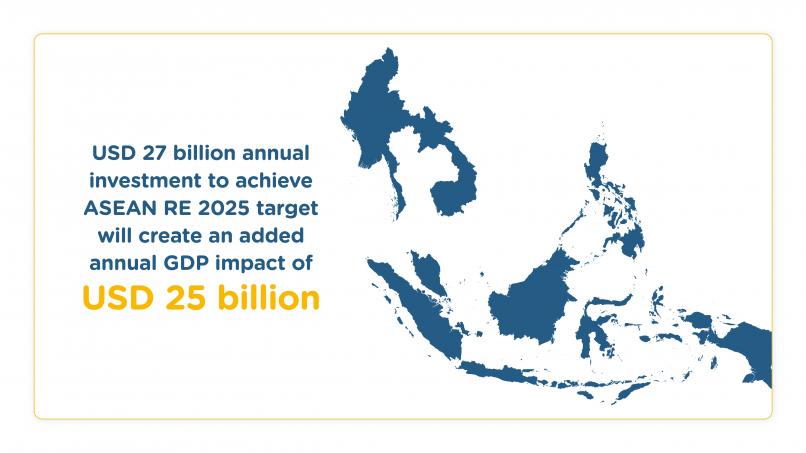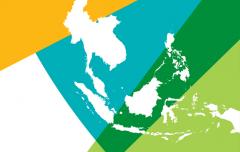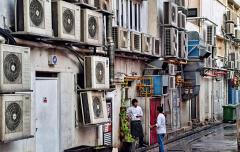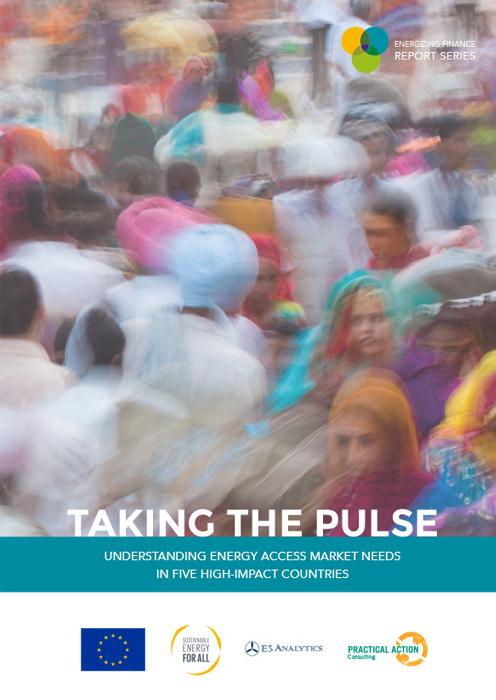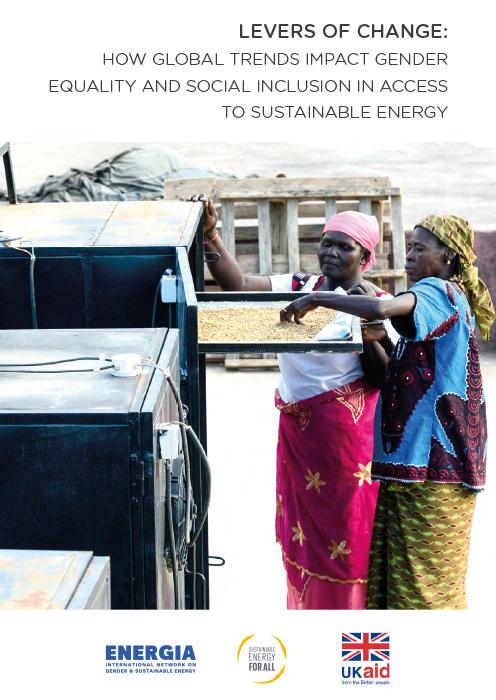The Recover Better with Sustainable Energy Guide for Southeast Asian Nations
This sustainable energy guide highlights the opportunities, benefits and enablers that will help leaders guide their countries onto a more long-term sustainable and resilient development trajectory. As Southeast Asian countries recover better, they can also lead by example by translating their recovery actions into updated Nationally Determined Contributions (NDCs) under the Paris Agreement.
Investments in energy have a significant GDP multiplier that will benefit the country and its economy.
- For every US dollar invested in the transition towards renewable energy, an additional USD 0.93 of GDP growth above business as usual is expected to occur.
- Investments in the Southeast Asian region to achieve the ASEAN target of 23 percent renewable energy share by 2025 can provide an annual additional GDP growth of USD 25 billion.
- Providing modern clean cooking access to 30 percent of the currently unserved population is estimated to result in a macroeconomic benefit (economic, health and environment) of USD 15 for every dollar spent.
